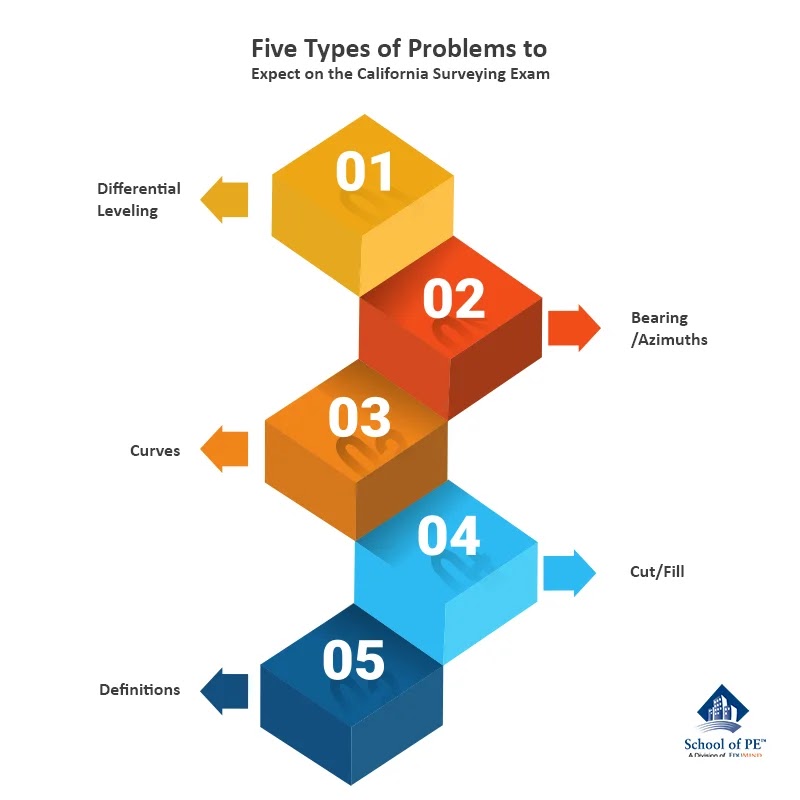Table of Contents
1. Differential Leveling
Differential leveling problems are big on the exam, but luckily really come down to two main formulas, with very few variables. Make sure you know the definitions of backsight and foresight and these will be a breeze.
Related: Stadia problems are similar but involve the inclined equipment and a lot more geometry when sorting out the angles.
2. Bearings/Azimuths
A bearing is a measurement of an angle within a quadrant, relative to the north and south axes. An azimuth is a measurement of an angle relative to the north axis (up to 360 degrees). These two terms are guaranteed to come up on the exam, either as standalone questions or part of a larger problem.
Related: Make sure you have a graphing calculator to help convert Degrees Minutes Seconds to Degrees!
3. Curves
Horizontal and vertical curves are, from my experience, the largest topic on the exam. The best thing you can do for yourself is to practice these questions until you feel absolutely confident. It will also help to either tab your notes or make a cheat sheet with all the useful formulas.

4. Cut/Fill
Cut and fill questions were, honestly, the hardest for me. While it may seem simple, these problems combine several concepts, sign conventions (+/-), area formulas, reading charts, and knowing many definitions.
Related: Along with cut and fill diagrams, don't forget to study up on mass diagrams, borrow pits, and shrinkage vs. swell.
5. Definitions
Definitions will make up a major portion of the exam, and my #1 tip is to take a surveying dictionary with you into the exam. This will help with all the terms and make you feel confident in your answers. The definitions will often be focused on types of maps, surveying techniques, or equipment.
School of PE offers comprehensive exam review courses for the CA Seismic and CA Surveying exams. Visit our website to register for a prep class that best fits your schedule.
No comments :
Post a Comment